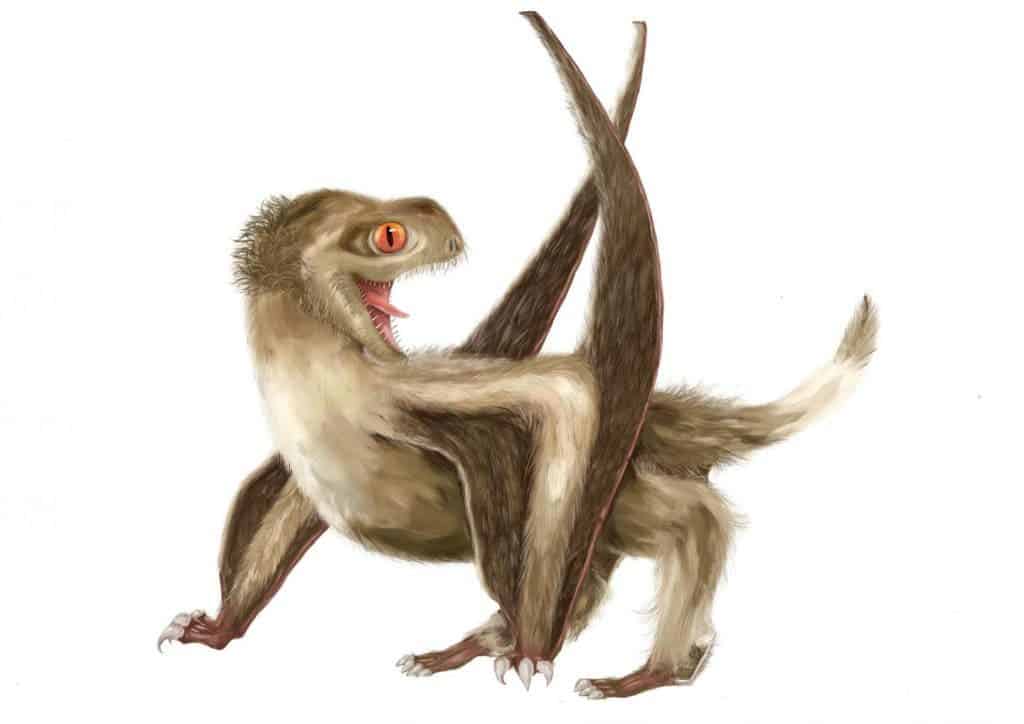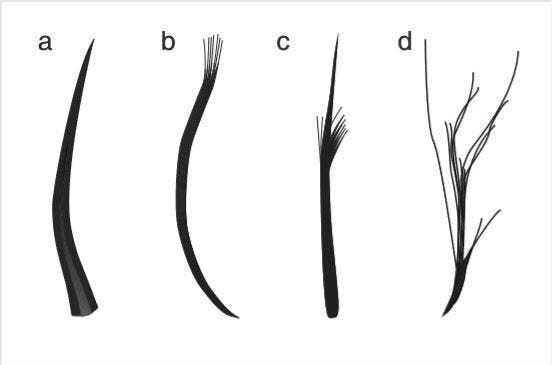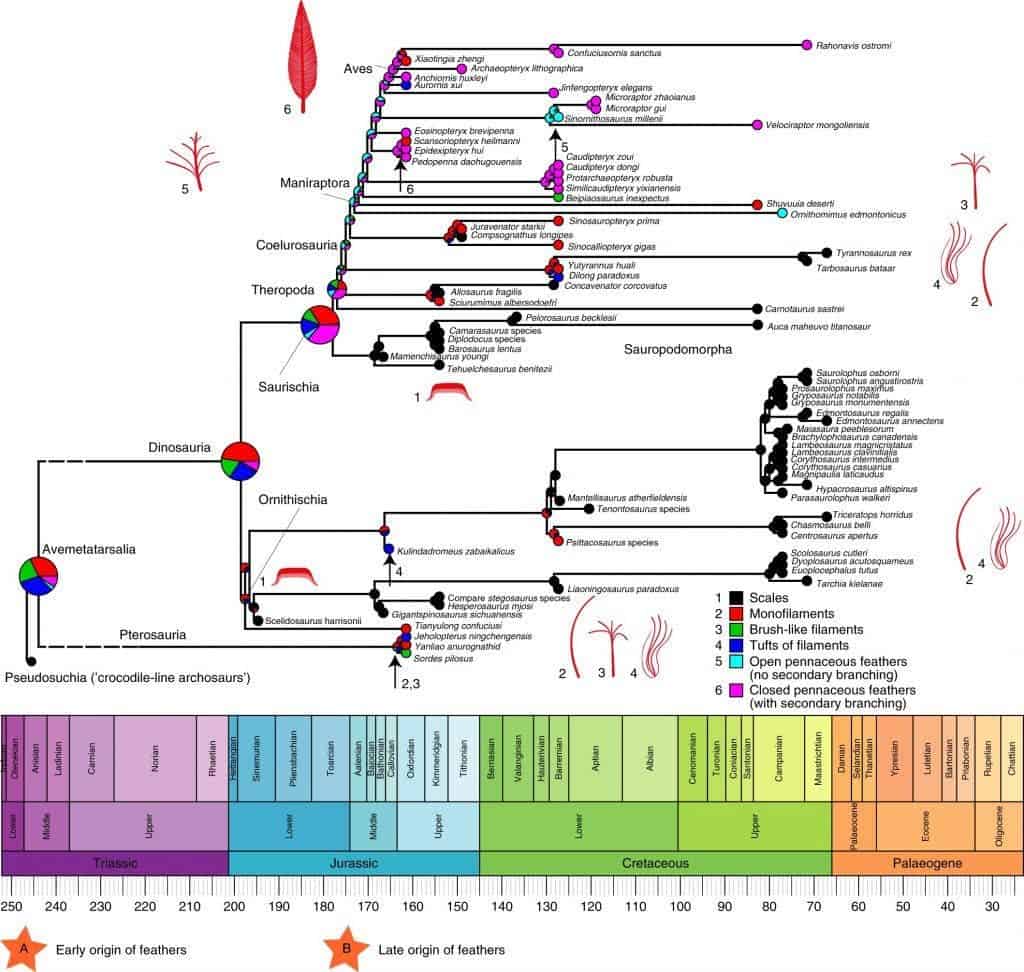
From the peacock’s flamboyant plumage to the outlandish Birds of Paradise, feathers come in a surprising diversity of colors and forms. However, feathers are much older than birds, and perhaps even older than dinosaurs themselves — the ancestors of birds. Excavations in Mongolia have revealed a pterosaur specimen that seems to have had four kinds of feathers, an extraordinary discovery that pushes back the evolution of feathers by 70 million years.
Pterosaurs were highly successful flying reptiles that dominated the sky and lived side by side with dinosaurs, from 230 million to 66 million years ago. The creatures, which were neither birds nor dinosaurs, evolved on a separate branch of the reptile family and were the first animals after insects to develop powered flight.
Scientists had always known that pterosaurs had a furry coating made of pycnofibers, which are basically hairy fibers. But a new study performed by an international team of scientists shows that at least some pterosaurs had feathers — four types of feathers to boot: simple filaments (hairs), filaments in bundles, filaments with a tuft halfway down, and down feathers. What’s more, the analysis was even able to resolve fine details of melanosomes, which suggest the Daohugou pterosaur’s feathers had a ginger color.

The pterosaur specimens were excavated from the Daohugou Formation, in Inner Mongolia, and were then examined with high-powered microscopes that can image very fine structures.
“Some critics have suggested that actually there is only one simple type of pycnofibre, but our studies show the different feather types are real.”
“We focused on clear areas where the feathers did not overlap and where we could see their structure clearly. They even show fine details of melanosomes, which may have given the fluffy feathers a ginger color,” said Maria McNamara of University College Cork and co-author of the new study.
Anatomically-speaking, the pterosaur feathers aren’t at all different from those seen in modern birds and some dinosaur groups. The different coverings are likely to have played functional roles in heat regulation, sensing, signaling, and aerodynamics.
Modern birds have two types of more advanced feathers that are employed for powered flight and body smoothing, consisting of contour feathers with a hollow quill and barbs down both sides. The other feather types, monofilaments and down feathers, are much more widely seen across not only birds but also theropod dinosaurs (the ancestors of birds).
Since there are no anatomical differences between the pterosaur fibers and the feathers of birds and dinosaurs, the researchers concluded that they all must share an evolutionary origin — and that was about 250 million years ago.

Around this time, life was recovering from the devastating end-Permian mass extinction and land vertebrates, including the ancestors of dinosaurs, had switched gait from sprawling to upright and even acquired some degree of warm-bloodedness.
“The mammal ancestors by then had hair, so likely the pterosaurs, dinosaurs and relatives had also acquired feathers to help insulate them,” co-author Professor Mike Benton from the University of Bristol’s School of Earth Sciences said in a statement.
“The hunt for feathers in fossils is heating up and finding their functions in such early forms is imperative. It can rewrite our understanding of a major revolution in life on Earth during the Triassic, and also our understanding of the genomic regulation of feathers, scales, and hairs in the skin.”
The findings were reported in the journal Nature Ecology & Evolution.
Was this helpful?



